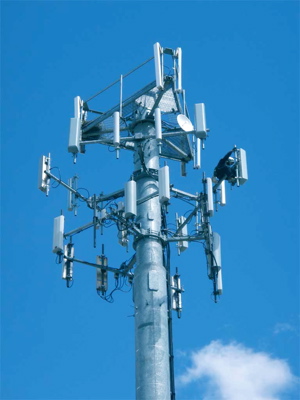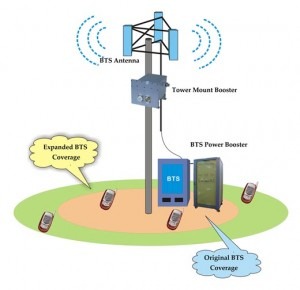 Planning and building a Wide area Wireless Network could be painfully challenging. Mobile service Providers have faced different kinds of challenges in Maintaining the 3G network throughout countries like US, UK, India, China where the urgency had taken flight long ago.
Planning and building a Wide area Wireless Network could be painfully challenging. Mobile service Providers have faced different kinds of challenges in Maintaining the 3G network throughout countries like US, UK, India, China where the urgency had taken flight long ago.
Lot of the back-end work deals with complex signalling and RF management which is both tedious and expensive to maintain. But seems like IBM researchers in China have come up with a faster, yet, elegant solution that reckons shifting the signal-processing overhead from base stations into the cloud. This will make it cheaper and easier to upgrade networks, leading to wireless networks that can provide better coverage by rapidly adapting to user demand.
In order to make offloading the signal processing to the cloud, A new architecture called the Wireless Network Cloud (WNC). WNC would make it possible to step away from “the usual” dedicated hardware for RBS (radio base stations) that serve Radio Frequencies for networks like GSM and 3G cell phone networks. This technique would decouple the radio antennas from the base stations, which now will be processed in the Cloud.
Carrying a voice/data signal is a costly job. There’s a lot of signal processing–the modulation and encoding of the signals to and from the physical antennas–which is carried out using software radio technology. Witht he power of Multicore processors and network grids, a general-purpose data center can do all the signal processing, making it much more cost-effective.
Advanced Network Management
Apart from what is said, WNC enables management of the network in a more centralized way. The Bearer signals would be relayed to and from multiple antennas, “remote radio heads,” via optical fibres from as far away as 40 kms. (The limitation of the distance is set by the acceptable delays.)
Having a centralized network management can certainly give providers added benefits. When it comes to managing networks Optimally, it can provide smart solution. e.g. In areas where cell traffic may vary dramatically depending upon the time of day–residential area where daytime voice traffic is light but evening traffic is heavy, or business areas where the opposite is true–WNC should allow the network operator to allocate, scale resources on-demand, something which was never so easy with traditional Networks.
Cost Benefit
The main attraction for network operators is the cost. Traditional base stations currently account for about 40 percent of a network’s total cost. So that means of a new company starts its setup for say 4G service, 40-50% is spent on the netowrk equipment leaving aside the staffing, assets, etc. And because Telecom hardware is totally proprietary, whenever a network is upgraded, almost all of this equipment has to be replaced. On the other side, WNC upgrades can be implemented relatively cheaply by installing new software.
So is this Cloud Network Management New?
“IBM’s concept is not totally new but rather a combination of familiar themes, such as software-defined radio, network equipment virtualization, and networks as software,” says Dipankar Raychaudhuri director of the Wireless Information Network Laboratory (WINLAB) at Rutgers University.
“For example, there is a U.K. company called picoChip that offers a variety of base stations in software using the same parallel computing platform.
“I think there is a good, strong argument to use software radio in base stations,” says David Grace head of the communications research group at the University of York, U.K., and chair of the World Universities Network Initiative on Cognitive Communications. Grace says the approach is capable of handling the signal processing required of base stations, but he is less convinced about the need to relocate this software and absorb it within the cloud. “It’s the old argument of whether to centralize or distribute,” he says.
Is there a downside of Cloud Network Management?
Of course, the one I see is that we have to introduce the additional communication between devices to allow that to happen, which can cause problems in bad times. Even with AtoD (analog-to-digital) converters at the antennas, the raw streams of data they would create would be of very high frequencies. Processing this is notoriously difficult because it requires even higher frequency sampling. For instance, a typical GSM network at 1800 Mhz would need sampling at atleast double the frequency 3600 Mhz and converting that into bitstream would quote to very high bitrates, hence large data capacity would be needed for the Fibre, but certianly its not as high as what you would assume, few mbps can serve a typical GSM Antenna (BTS) quiet well.
Has this been Tested in field?
IBM already seems to have a prototype for a 4G technology: WiMax. This has demonstrated that a general-purpose data server can handle the software radio requirements in realtime.
Verdict
The potential for WNC is huge. Beyond cost effectiveness, it will improve their ability to manage mobile virtual network operators–phone companies that own no infrastructure and instead lease it off larger companies. And although WNC would be most suitable for urban areas with very high density, it could also help in rural areas where network nodes can be hard to access and have unreliable power supplies. Overall, providing optimal solutions in every sector.
We write about Networking, Google , Open Source, Programming, iPhone, Android and latest in Tech@taranfx on Twitter or by subscribing below:
loading...
loading...
